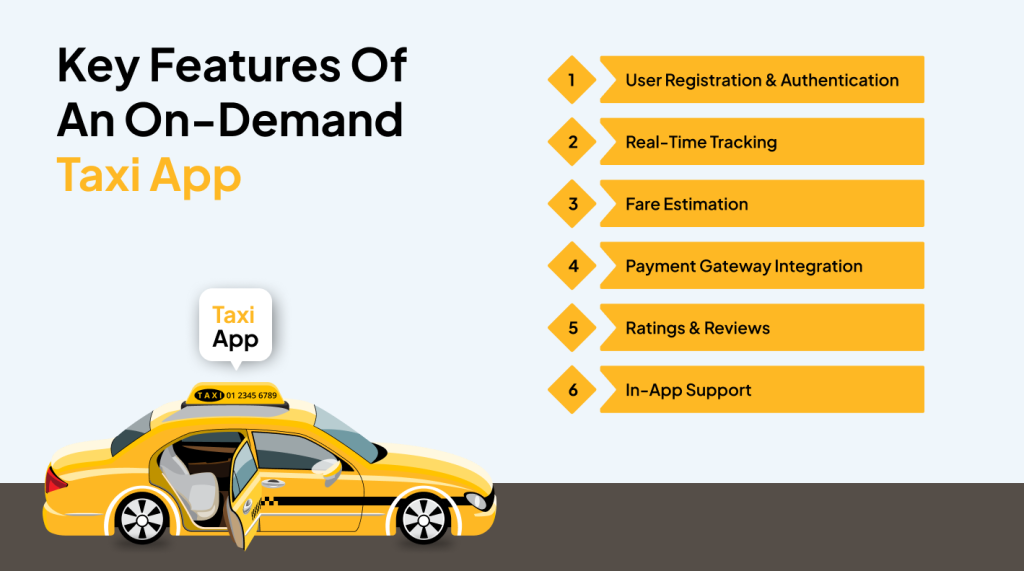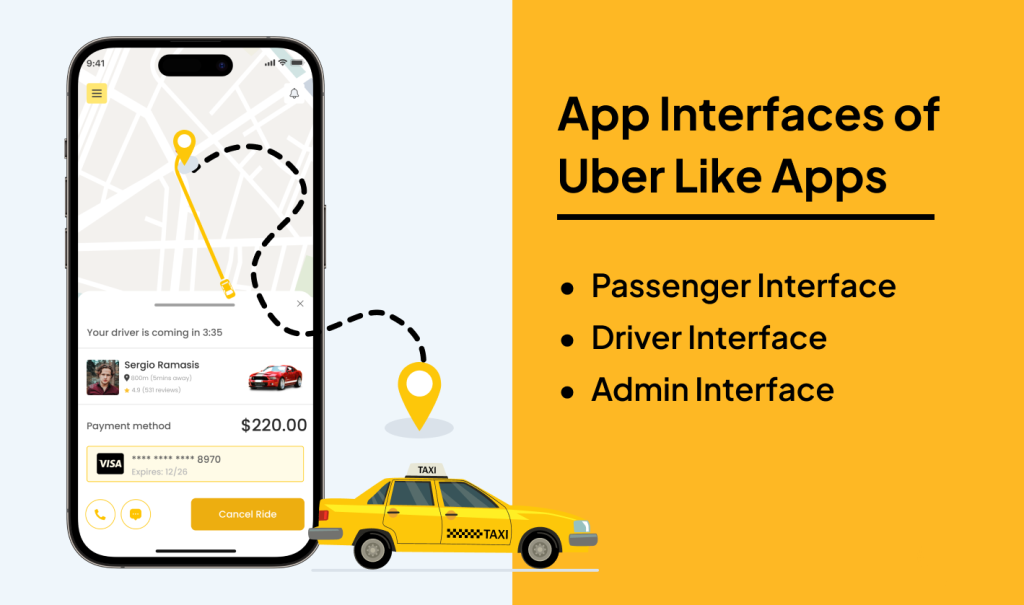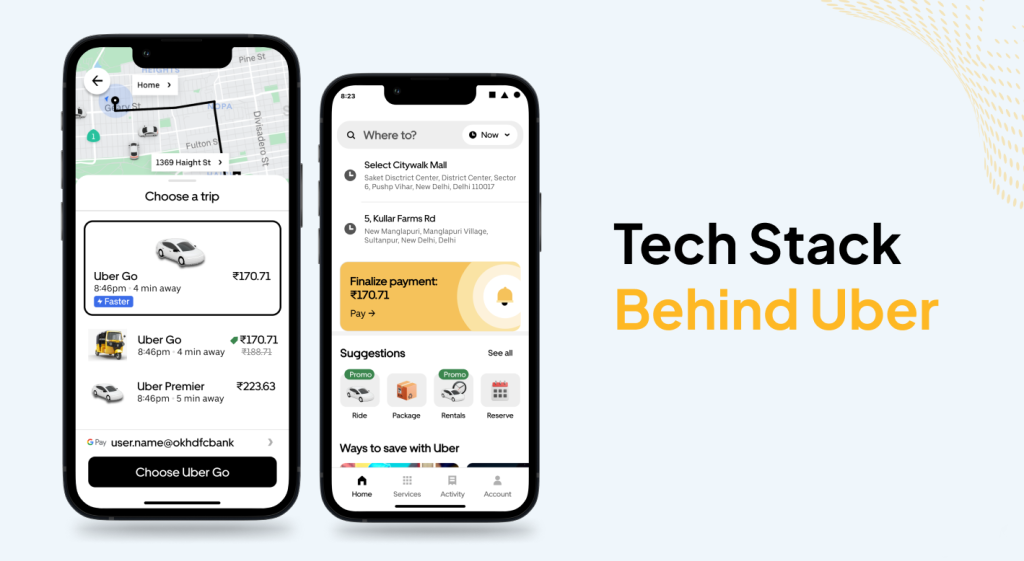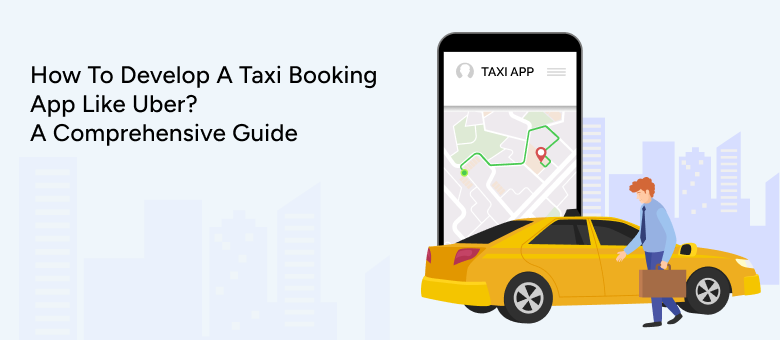Taxi service apps have completely transformed the traditional taxi marketplace, and these will stay here for decades. Taxi app Uber generated $31.8 billion in revenue in 2022, an 82% increase on the previous year. In this article, we will explore the development process of how to develop a taxi booking app like Uber. We will discuss the key features, essential steps, and considerations involved in building such an app.
In today’s world where convenience and efficiency are the most important factors which people focus on, ride-hailing apps have revolutionized how we commute. In this blog, we will dive into every aspect of how to develop a taxi-booking app like Uber. From understanding the target market and its competition to developing a feature-rich app that caters to both passengers and drivers, we’ve got you covered. We will explore the importance of technology infrastructure, user-friendly interfaces, and tailoring your app to meet the specific requirements of your target audience.
With the help of this comprehensive guide, you’ll gain valuable insights into the crucial aspects of developing a taxi booking app. Whether you’re an entrepreneur looking to disrupt the transportation industry or an existing business seeking to expand your services, this article will provide you with the information you need to build a successful on-demand taxi app like Uber.
Understanding The Success of Taxi Apps like Uber
To build a successful on-demand ride-hailing app like Uber, it is essential to understand the factors contributing to its success. Uber’s rise to prominence can be attributed to its ability to provide a seamless and convenient experience for both passengers and drivers. The key to their success lies in their user-friendly interface, efficient matching algorithm, and focus on safety and security.
One of the crucial aspects that set Uber apart from its competitors is its ability to provide real-time tracking of drivers and estimated arrival times. This feature not only enhances the passenger experience but also ensures transparency and trust. Additionally, Uber’s cashless payment system and seamless integration with various payment gateways have made it a preferred choice for many users.
Uber’s success is also attributed to its focus on driver satisfaction. By offering competitive incentives, flexible working hours, and a reliable support system, Uber has managed to attract and retain a large pool of drivers. This, in turn, has ensured a consistent supply of drivers, allowing for shorter wait times and better service quality.
Key Features Of An On-Demand Taxi App

To build a successful on-demand taxi app like Uber, it is essential to incorporate key features that cater to the needs of both passengers and drivers. Some of the must-have features include:
1. User Registration and Authentication
Implement a seamless registration process that allows users to create accounts, verify their identities, and securely log in to the app.
2. Real-Time Tracking
Enable real-time tracking of drivers, allowing passengers to monitor their driver’s location and estimated arrival time.
3. Fare Estimation
Integrate a fare estimation feature that provides passengers with an estimated cost of their ride before booking.
4. Payment Gateway Integration
Offer multiple payment options, including cashless payment methods, to ensure convenience for passengers.
5. Ratings and Reviews
Implement a rating and review system that allows both passengers and drivers to provide feedback and maintain service quality.
6. In-App Support
Provide an in-app support system that allows users to report issues, ask questions, and receive assistance in real-time.
Features & Interfaces of Uber-like Apps

1. Passenger Interface
The passenger interface of an Uber-like app is designed to be easy to use and convenient. The app should allow passengers to register or sign up quickly and easily, using their mobile number or email address. Once registered, passengers should be able to book a cab with just a few clicks. The app should display a map of the user’s current location, as well as the estimated pickup time and fare. Passengers should also be able to choose their preferred vehicle type and payment method.
- Instant notifications to available drivers after a passenger books a cab.
- Live tracking of booked cabs for passengers to prepare for onboarding.
- GPS navigation for drivers to easily view pickup and drop locations and routes.
2. Driver Interface
The driver interface of an Uber-like app is also designed to be easy to use and convenient. The app should send instant notifications to available drivers when a passenger books a cab. The app should also display a map of the pickup and drop locations, as well as the estimated route. Drivers should also be able to communicate with passengers through the app.
Once the driver arrives at the pickup location, they should be able to start the trip with a single tap. The app should track the driver’s location and provide the passenger with an estimated time of arrival (ETA). Once the passenger has reached their destination, the driver should be able to end the trip and receive their payment.
- Instant notifications to available drivers after a passenger books a cab.
- Live tracking of booked cabs for passengers to prepare for onboarding.
- GPS navigation for drivers to easily view pickup and drop locations and routes.
3. Admin Interface
The admin interface of an Uber-like app is used to manage all aspects of the service, including drivers, passengers, and trips. The admin interface should allow the admin to view real-time data on all active trips, as well as historical data on completed trips. The admin should also be able to manage driver accounts, approve new drivers, and suspend or deactivate existing drivers.
In addition, the admin interface should allow the admin to manage passenger accounts, resolve disputes, and issue refunds. The admin should also be able to create and manage promotions and track the performance of the service.
- Monitor all details, including total booked cabs, completed trips, transaction history, and commission details.
- Simple user management process to manage everything from a single place.
- Easy advertising of the business app on social media to generate traffic.
4. Additional Features
In addition to the core features listed above, an Uber-like app can also include a number of additional features, such as:
- Ride scheduling: Passengers should be able to schedule rides in advance so that they can be sure to have a ride when they need it.
- Fare estimation: Passengers should be able to get an estimate of the fare for a trip before they book it.
- Multiple vehicle types: Passengers should be able to choose from a variety of vehicle types, such as sedans, SUVs, and minivans.
- Corporate accounts: Companies should be able to create corporate accounts for their employees so that they can easily track and manage travel expenses.
- Ratings and reviews: Passengers should be able to rate and review drivers, and drivers should be able to rate and review passengers. This helps to ensure that both passengers and drivers have a positive experience.
What is The Technology Stack Behind Uber?

Uber is one of the most popular ride-hailing apps in the world, and its technology stack is impressive. The app uses a variety of programming languages, frameworks, and tools to power its features and functionality.
iOS and Android
The Uber app is available for both iOS and Android devices. The iOS app is developed using Swift and Objective-C, while the Android app is developed using Java and Kotlin.
Mapping and Geolocation
Uber’s mapping and geolocation functionality is essential for the app to work. The app uses Google Maps to provide users with directions and to track the location of drivers and riders. Uber also uses its own proprietary mapping technology to improve the accuracy and efficiency of its routing algorithms.
Push Notifications and SMS
Uber uses push notifications and SMS messages to communicate with users about their rides. For example, riders will receive a notification when their driver is on their way and when their ride is about to arrive.
Payment Integration
Uber offers a cashless payment system that allows riders to pay for their rides using their debit or credit cards. The app uses Braintree to process payments and comply with the Payment Card Industry Data Security Standard (PCI DSS).
Other Technologies
Uber also uses a variety of other technologies to power its app, including:
1. AWS: Uber uses Amazon Web Services (AWS) to host its infrastructure and to store its data.
2. Kafka: Uber uses Kafka to stream data between its various systems.
3. Spark: Uber uses Spark to process and analyze its data.
4. Machine Learning: Uber uses machine learning to improve its routing algorithms, predict demand, and detect fraud.
Designing a User-Friendly and Intuitive App Interface
A user-friendly and intuitive app interface is key to the success of your on-demand ride-hailing app. Focus on creating a visually appealing design that is easy to navigate and understand. Use clear and concise language, intuitive icons, and logical flow to guide users through the app.
Consider factors such as colour schemes, typography, button placement, and overall app layout. Conduct user testing and gather feedback to continuously improve and optimize your app’s interface.
Developing The Backend Infrastructure and Integrating APIs
Developing a robust back-end infrastructure is essential to ensure the smooth functioning of your on-demand ride-hailing app. This includes setting up servers, databases, APIs, and integrating third-party services.
Collaborate with experienced developers to build a scalable and reliable infrastructure that can handle high volumes of data and provide real-time updates. Integrate APIs for services such as maps, payment gateways, and notifications to enhance the functionality of your app.
Launching and Marketing Your On-demand Ride-hailing App
Once your app is developed, it’s time to launch and market it to your target audience. Create a comprehensive marketing strategy that includes digital marketing, social media promotion, influencer marketing, and partnerships with local businesses.
Offer attractive discounts, referral programs, and incentives to attract new users and encourage user retention. Continuously monitor and analyze user feedback to make necessary improvements and updates to your app.
Ensuring Continuous Improvement and Scaling Your Taxi Booking App Like Uber
Building a successful on-demand taxi app is an ongoing process. Continuously monitor app performance, user feedback, and market trends to identify areas for improvement. Regularly update your app with new features, bug fixes, and security enhancements.
Additionally, consider scaling your app to new cities and regions to expand your user base. Collaborate with local transportation authorities and businesses to ensure compliance and foster positive relationships.
With the help of this comprehensive guide, you’ll gain valuable insights into the crucial aspects of how to develop a taxi booking app like Uber. Whether you’re an entrepreneur looking to disrupt the transportation industry or an existing business seeking to expand your services, this article has provided you with the information you need to build a successful on-demand taxi app like Uber.
How To Develop A Taxi Booking App Like Uber? | Hire experienced developers to develop taxi booking apps from Aipxperts. Contact us for project estimates and enjoy a 15-day risk-free trial period.











